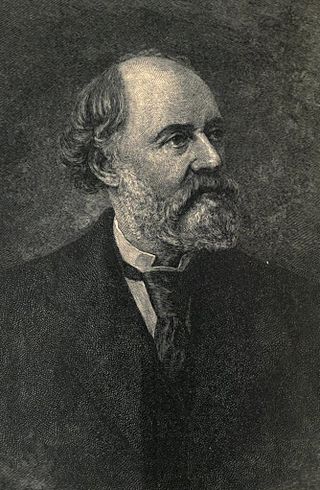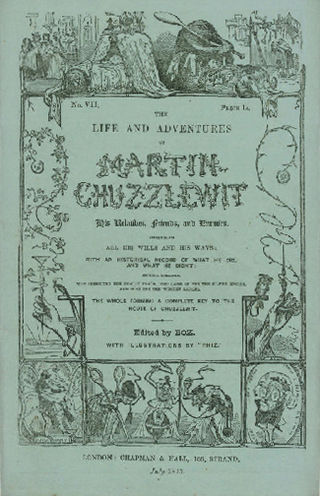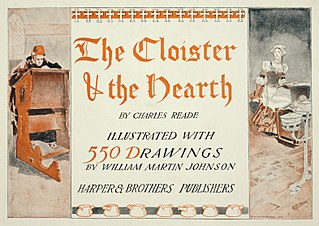
Charles John Huffam Dickens was an English novelist and social critic who created some of the world's best-known fictional characters, and is regarded by many as the greatest novelist of the Victorian era. His works enjoyed unprecedented popularity during his lifetime and, by the 20th century, critics and scholars had recognised him as a literary genius. His novels and short stories are widely read today.

A cliffhanger or cliffhanger ending is a plot device in fiction which features a main character in a precarious or difficult dilemma or confronted with a shocking revelation at the end of an episode or a film of serialized fiction. A cliffhanger is hoped to incentivize the audience to return to see how the characters resolve the dilemma.

Oliver Twist; or, The Parish Boy's Progress, is the second novel by English author Charles Dickens. It was originally published as a serial from 1837 to 1839 and as a three-volume book in 1838. The story follows the titular orphan, who, after being raised in a workhouse, escapes to London, where he meets a gang of juvenile pickpockets led by the elderly criminal Fagin, discovers the secrets of his parentage, and reconnects with his remaining family.
This article contains information about the literary events and publications of 1853.

Charles Reade was a British novelist and dramatist, best known for The Cloister and the Hearth.

Peril at End House is a work of detective fiction by British writer Agatha Christie, first published in the US by the Dodd, Mead and Company in February 1932 and in the UK by the Collins Crime Club in March of the same year. The US edition retailed at $2.00 and the UK edition at seven shillings and sixpence (7/6).

The Posthumous Papers of the Pickwick Club was the first novel by English author Charles Dickens. His previous work was Sketches by Boz, published in 1836, and his publisher Chapman & Hall asked Dickens to supply descriptions to explain a series of comic "cockney sporting plates" by illustrator Robert Seymour, and to connect them into a novel. The book became a publishing phenomenon, with bootleg copies, theatrical performances, Sam Weller joke books, and other merchandise. On its cultural impact, Nicholas Dames in The Atlantic writes, "'Literature' is not a big enough category for Pickwick. It defined its own, a new one that we have learned to call 'entertainment'." The Pickwick Papers was published in 19 issues over 20 months, and it popularised serialised fiction and cliffhanger endings.

The Life and Adventures of Martin Chuzzlewit is a novel by Charles Dickens, considered the last of his picaresque novels. It was originally serialised between January 1843 and July 1844. While he was writing it Dickens told a friend that he thought it was his best work thus far, but it was one of his least popular novels, judged by sales of the monthly instalments. Characters in this novel gained fame, including Pecksniff and Mrs Gamp.

All the Year Round was a Victorian periodical, being a British weekly literary magazine founded and owned by Charles Dickens, published between 1859 and 1895 throughout the United Kingdom. Edited by Dickens, it was the direct successor to his previous publication Household Words, abandoned due to differences with his former publisher.

They Came to Baghdad is an adventure novel by Agatha Christie, first published in the United Kingdom by the Collins Crime Club on 5 March 1951 and in the United States by Dodd, Mead and Company later in the same year. The UK edition retailed at eight shillings and sixpence (8/6) and the US edition at $2.50.

The Cloister and the Hearth (1861) is an historical novel by the British author Charles Reade. Set in the 15th century, it relates the travels of a young scribe and illuminator, Gerard Eliassoen, through several European countries. The Cloister and the Hearth often describes the events, people and their practices in minute detail. Its main theme is the struggle between man's obligations to family and to Church.
Put Yourself in His Place is a 1912 American silent short drama based on an 1870 English novel by Charles Reade. The film was adapted and directed by Theodore Marston, and stars William Garwood and Marguerite Snow in the lead roles.

Robbery Under Arms is a bushranger novel by Thomas Alexander Browne, published under his pen name Rolf Boldrewood. It was first published in serialised form by The Sydney Mail between July 1882 and August 1883, then in three volumes in London in 1888. It was abridged into a single volume in 1889 as part of Macmillan's one-volume Colonial Library series and has not been out of print since.

In literature, a serial is a printing or publishing format by which a single larger work, often a work of narrative fiction, is published in smaller, sequential instalments. The instalments are also known as numbers, parts, fascicules or fascicles, and may be released either as separate publications or within sequential issues of a periodical publication, such as a magazine or newspaper.

Sampson Low was a bookseller and publisher in London in the 19th century.
It Is Never Too Late to Mend is an 1856 novel by the British writer Charles Reade. It was later turned into a play. A ruthless squire becomes obsessed with a younger woman and conspires to have her lover framed and sent to jail.

A Conspiracy of Friends is the third online novel by Alexander McCall Smith, author of The No. 1 Ladies' Detective Agency series. In the first series, the author wrote a chapter a day, starting from 15 September 2008, and the series ran for 20 weeks, totalling 100 episodes. The daily chapters, read by Andrew Sachs, were also available as an audio download. The second and third series were published online, running from Monday 21 September 2009 and Monday 13 September 2010, respectively.

Griffith Gaunt, or Jealousy is an 1866 sensation novel by Charles Reade. A best-selling book in its day, it was thought by Reade to be his best novel, but critics and posterity have generally preferred The Cloister and the Hearth (1861).
Watts Phillips was an English illustrator, novelist and playwright best known for his play The Dead Heart, which served as a model for Charles Dickens' A Tale of Two Cities.
















